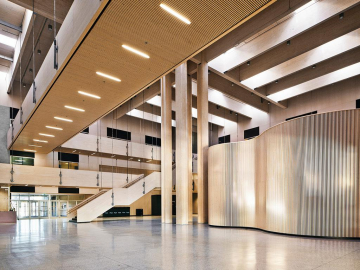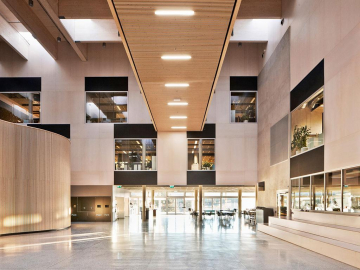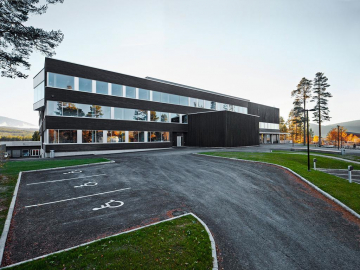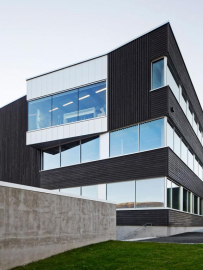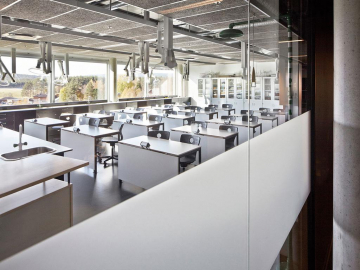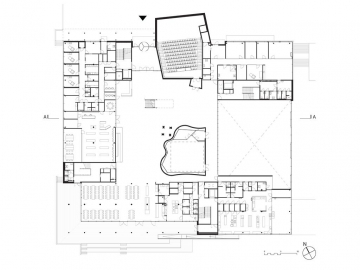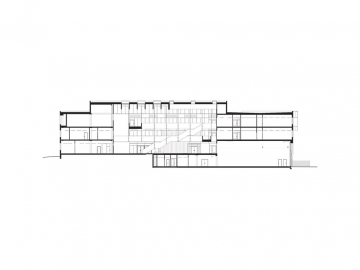Nord-Østerdal High School
A new high school, realized after 1. price in an open architect competition. The school brings together both vocational an academic subjects under one roof, as well as providing after-hours facilities for the local community. The building is organized around a large wooden atrium and with teaching room along the perimeter to maximize daylight.
The new high school is located on the edge of Tynset, a small rural town in eastern Norway. The building is placed on a small rise giving expansive views in all directions.The school has a wide catchment from the surrounding region. This region is characterized by large tracts of forest, with forestry being a key industry in the area. The climate in this part of Norway is notable for its hot summers and especially cold winters.
The school has a large and complex program with several different study disciplines including both academic and practical subjects. The limited site area necessitated a compact and rational plan. Due to the prevalent cold conditions the school is organized around a large, indoor communal atrium. Each department has a view into this space to emphasize equality and encourage communication. The main staircase and associated walkways are hung from glue-laminated timber beams. The blackbox theatre for dance and drama placed within this main space brings scale and variety to the large room. The wave-formed slatted wood walls of the blackbox also function as sound absorbent.
The plan follows a simple schema. All the classrooms are placed against an outside wall while the study areas, group rooms and break-out spaces are orientated towards the atrium. The building construction and machine workshops are placed in the basement with clerestory windows into the main communal area.
Wood is used extensively in order to accentuate the importance of forestry to the region. The main structure in the atrium as well as the staircases, walkways and roof are all made from solid wood. The interior wall surfaces are mostly veneers of birch and spruce. The exterior cladding is a mixture of horizontal and vertical timber weatherboarding. Flooring in the communal space is in-situ terrazzo while the teaching areas have rubber. The open plenum ceilings have floating panels of naturally colored wood wool cement.
The compact, cubic form of the school gives a very economical surface area in relation to its large volume. All the heating requirements are supplied from the biomass-fuelled district heating system. The external walls, roof and ground floors are highly insulated. All the windows are triple-glazed. The school has a «green» energy marking in relation to the Norwegian ratings system. Locally-sourced wood is used extensively throughout the building, both as a structural material, and as exterior and interior cladding. Concrete surfaces have been left exposed and untreated.

